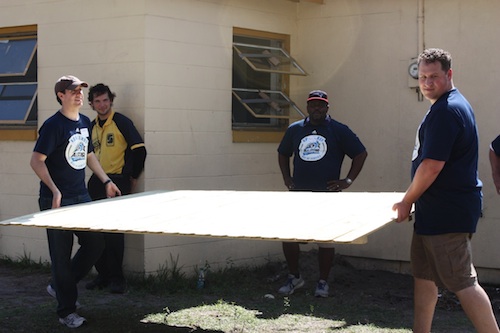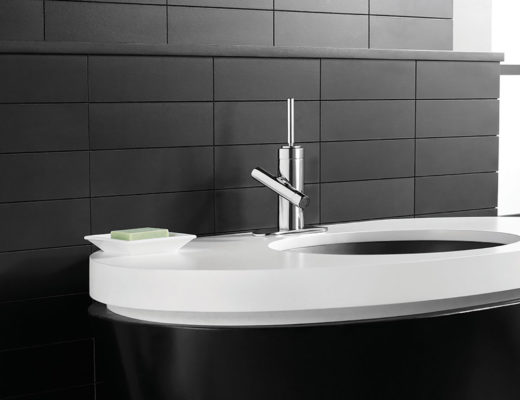While Rebuilding Together is focused on making a difference in communities in need, you can make a difference just by making some simple changes in your home or the home of an elderly family member or neighbor. Here are five easy to implement energy efficient home improvements you can make this week.
Toilet Flow Reducer – Time: 5 minutes per toilet:
Before the 1980s standard toilets used 5 gallons of water for each flush, newer toilets use 3.5 gallons per flush. There are also low-consumption toilets available that use only 1.6 gallons per flush. While it would be nice to place new toilets in every home, a more economical way is to use a toilet flow reduction device. These devices work by displacing a certain volume of water in the toilet tank. The specially designed bags hang safely in the toilet tank and displace between .75 and 1.25 gallons depending on the product. Properly installed, they will not interfere with normal toilet operations. Check with your local water district to see if they have a free distribution program. Note: these devices should not be installed in low-consumption toilets.

Compact Fluorescent Lamps (CFLs) – Time: 5 minutes per bulb:
New CFLs are more energy efficient than ever and come in a variety of brightnesses. Additionally, they no longer flicker or hum like the harsh fluorescents you may have in your garage or basement. CFLs save the most energy and money when they’re used in light fixtures that are on for 3 or more hours a day without a break. In most households these high-use fixtures can be found in the kitchen, porch, and living area. Start with your replacement program there and eventually switch out all the bulbs around your house as they burn out.
Refrigerator Coil Cleaning – Time: 10 minutes:
A refrigerator works by transferring heat from the inside of the unit to the the outside. It does this by allowing air to flow over cooling coils. If these coils are dirty, and they get very dirty, then the refrigerator has to work harder and less efficiently to keep food cool. In addition to saving energy, cleaning the coils helps a refrigerator’s fans and motors work more easily, and can help the unit last longer. Consult your manufacturers manual for the safe and proper way to clean your refrigerator’s coils.
Water Heater Temperature Reduction – Time 10 minutes:
The temperature in a water heater is controlled by adjusting its thermostat. Water heater thermostats don’t generally have temperature values listed on them, but will have a variety of settings designated as HOT/WARM or HIGH/MEDIUM/LOW, or perhaps some other scale. Depending on the age and condition of the water heater, these settings usually correspond to about 160°F for high/hot, and 120°F for low/warm. Most people have the temperature set to medium, or around 140°F. But a temperature of only 120°F is hot enough for most household purposes, such as showering and doing laundry. (It’s not quite hot enough for use in a dishwasher, but most dishwashers have separate heaters to boost water temperature up to its required level.) Reducing the water heater temperature saves about 3% to 5% in water heating costs for each 10°F reduction. If you’re replacing a water heater, look at new on-demand water heaters which are vastly more energy efficient as they’re not keeping water hot all day long. Follow your manufacturers instructions for the safe and proper way to reduce the temperature setting on your water heater.

Watersense Faucets – Time 20 minutes per faucet:
Replacing your bathroom faucet with an EPA certified WaterSense faucet can reduce a sink’s water flow by 30 percent or more without sacrificing performance. By installing a WaterSense labeled lavatory faucet an average household can save more than 500 gallons of water each year and $170+ on your water bill. Also, since these water savings reduce demands on water heaters, households will also save energy. Click herefor a complete list of Pfister’s Water Saving Faucets
Now through April, help the Friends of Pfister campaign reach our goal of $20,000 in Pfister faucets to help communities in need. Pfister is proud to partner with Rebuilding Together to bring safer and healthier homes to communities throughout the United States. Every ‘Like’ makes a difference, see how you can help today.



